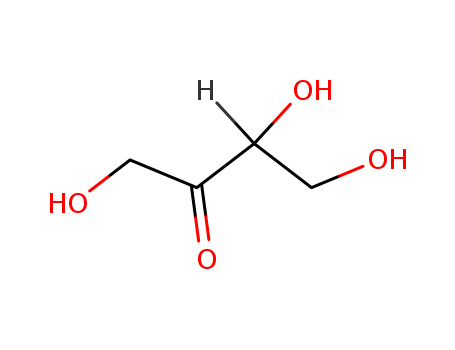- Chemical Name:Erythrulose
- CAS No.:40031-31-0
- Deprecated CAS:35007-64-8
- Molecular Formula:C4H8O4
- Molecular Weight:120.105
- Hs Code.:2914400090
- European Community (EC) Number:443-800-9,609-775-5
- UNII:HS4GKH53PR
- DSSTox Substance ID:DTXSID70862137
- Nikkaji Number:J1.544.967E
- Wikipedia:Erythrulose
- Wikidata:Q27109825
- Mol file:40031-31-0.mol
Synonyms:erythrulose;erythrulose, (R)-isomer;L-glycero-tetrulose





